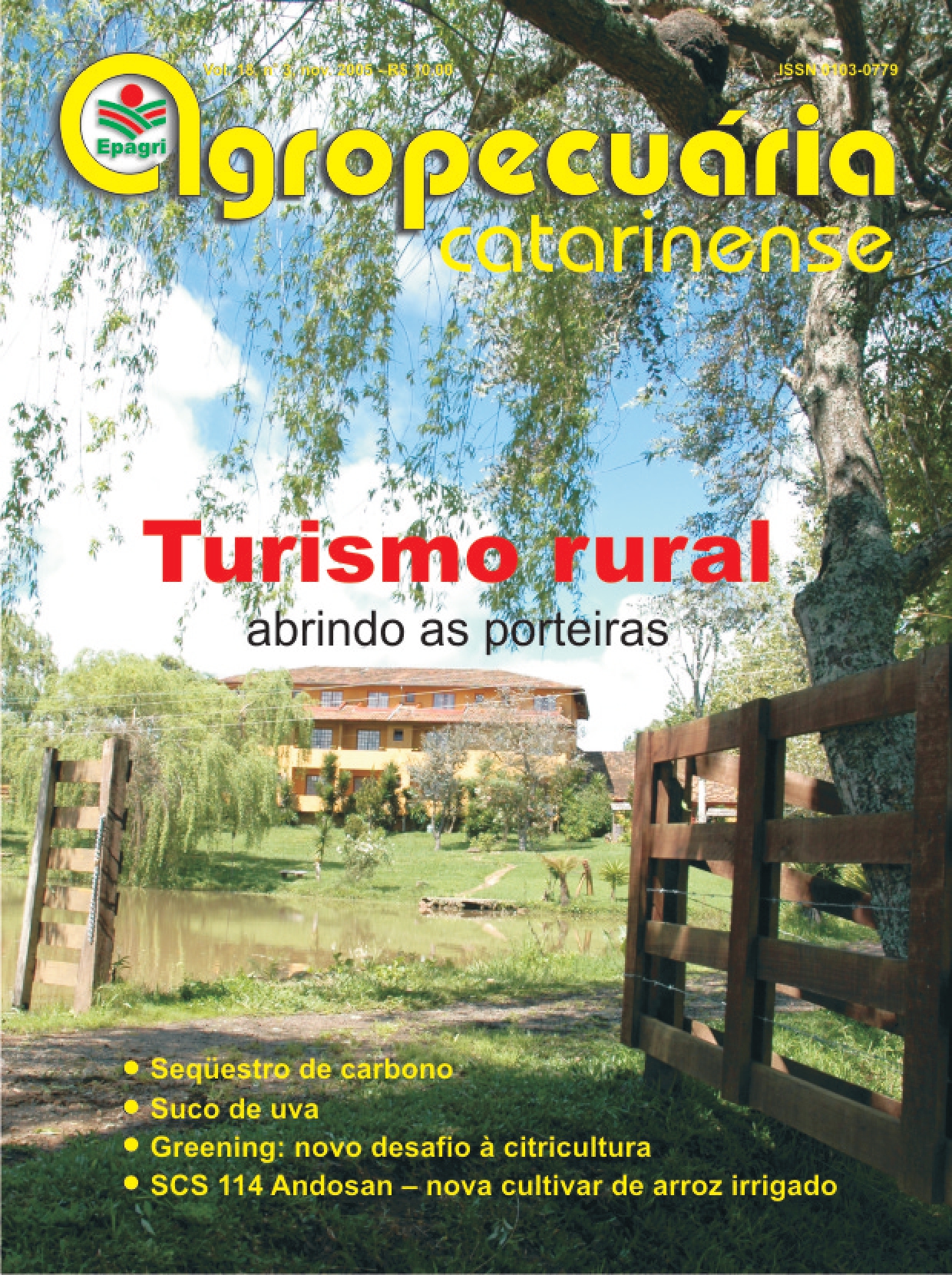Estimates of crossing frequency in Bromus auleticus
DOI:
https://doi.org/10.52945/rac.v18i3.982Keywords:
allozymes, unilocus, multilocus, autogamy, allogamyAbstract
It is important to know the plant reproduction mode for the exploration and management of the
natural plant population, as well as for breeding program and germoplasm regeneration of accessions. Bromus auleticus Trinius is a perennial winter grass, native of South America which shows high potential for forage and has good adaptation to soil and climate adversities. The objective of this work was to characterize the reproductive
system of the species and to estimate its crossing frequency among the accesses existing at Epagri/ Experiment Station of Lages. Four progenies originated from natural crosses were characterized by ten allozymic loci (PGI, SKDH, IDH, PRX1, PRX2, PRX3, MDH1, MDH3, 6PGD and EST). Crossing frequency of unilocus and multilocus
were estimated using the allelic frequencies and the MLT program (Ritland, 1990). The unilocus estimation variedfrom 0,001 to 1,648 and had a mean frequency of 0,571. The multilocus had a frequency of 1,096. Based on these results, the reproduction mode is predominantly allogamic.
Metrics
Publication Facts
Reviewer profiles N/A
Author statements
- Academic society
- Epagri - Revista Agropecuária Catarinense
- Publisher
- Empresa de Pesquisa Agropecuária e Extensão Rural de Santa Catarina - Epagri
Downloads
Published
How to Cite
Issue
Section
License
Copyright (c) 2005 Agropecuaria catarinense

This work is licensed under a Creative Commons Attribution 4.0 International License.





